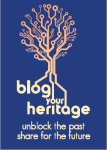Online Dating and Problematic Use: A Systematic Review
Abstract
Despite the constant growth in the use of online dating sites and mobile dating applications, research examining potential problematic use of online dating has remained scarce. Previous research has obviated problematic use of online dating in favour of users’ personality correlates and scams through online dating services. A systematic review was carried out using PsycINFO and Web of Science databases to gather previous findings that address potential problematic use of online dating by (i) identifying use and motivations, (ii) assessing users’ personality correlates, (iii) outlining negative correlates of use, (iv) examining sexual and impulsive behaviour, (v) exploring substance use and behavioural addictions in relation to online dating, and (vi) examining problematic use of online dating, resulting in 43 studies. Findings suggest that personality correlates such as neuroticism, sociability, sensation-seeking, and sexual permissiveness are related to greater use of online dating services. Sex-search and self-esteem enhancement are predictors of problematic use of online dating. Previous research coincides with online dating risks (e.g. fear of deception) and objectification tendency due to online dating services (sites and apps) design. Observations regarding methodological weaknesses and future research implications are included.
Back in 1995, Match was launched for public use as a popular global online dating service. Within a e the second most popular industry for paid online content with an annual revenue of $1.9 billion (Matthews 2018), moving from being a service  used by a minority to a tool frequently used by millions of individuals in modern societies. In 2007, location-based smartphone dating applications first appeared, which allowed users to access online dating anytime and anywhere, making them ubiquitous. Regarding the ubiquity of online dating, ) reported that higher availability may be associated with greater engagement in dating apps by showing higher rates of log-ins and use whilst engaged in day-to-day activities.
used by a minority to a tool frequently used by millions of individuals in modern societies. In 2007, location-based smartphone dating applications first appeared, which allowed users to access online dating anytime and anywhere, making them ubiquitous. Regarding the ubiquity of online dating, ) reported that higher availability may be associated with greater engagement in dating apps by showing higher rates of log-ins and use whilst engaged in day-to-day activities.
Greater use of online dating may not necessarily imply the existence of problematic use. However, previous literature in the field of internet disorders has found that extended use (higher frequency of use) is related to higher scores on s). Yet, extended use is not sufficient to describe problematic use of online dating. Its aetiology and maintenance may be a reflection of diverse factors of different nature (i.e. biological, psychological, and social). Hence, an interdisciplinary explanation (i.e. biopsychosocial framework) is needed. Problematic use of online dating could be explained by utilizing the ‘addiction components model’ (Griffiths 2005) which postulates all addictive behaviours comprise six core components: (i) salience (dating app use dominates to a great extent the cognitive and behavioural reality of the individual), (ii) mood modification (alteration of mood by use of dating apps), (iii) tolerance (individual’s use of dating apps increases over time), (iv) withdrawal (distress when dating app use is interrupted for a longer period of time), (v) conflict (use of dating apps negatively affects the social reality of the user), and (vi) relapse (return to previous patterns of dating app use after interruption).
Online Dating and Problematic Use: A Systematic Review
In terms of structural characteristics of dating applications, location-based structural characteristic appear to facilitate offline encounters (Miles 2017), enabling short-term gratification of users’ needs (e.g. users seeking sex encounters are able to find other users at walking distance). In fact, based on the interaction of person-affect-cognition-execution (I-PACE) model (Brand et al. 2016), short-term gratification on dating apps can reinforce the appearance of dysfunctional coping styles to deal with unpleasant emotions (e.g. sadness, frustration and anger) and dysfunctional affective and cognitive responses in relation to dating apps (e.g. craving, urge for mood regulation and attentional bias), which are related to internet-based disorders and exemplify the criteria of Griffiths’ (2005) model previously described.
